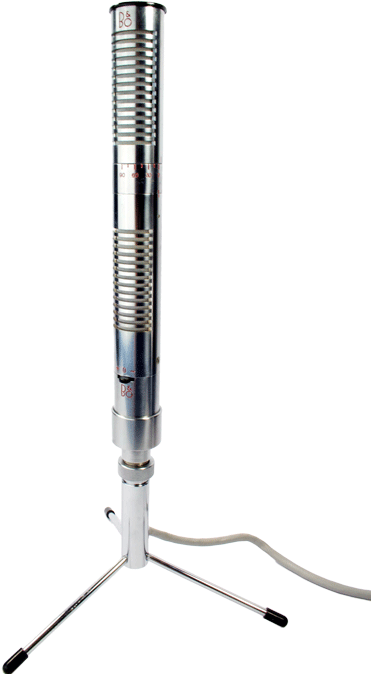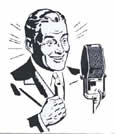|
The microphone of this month is a stereo ribbon microphone and dates from the sixties, but is still popular with both collectors and users in the studio. Like most ribbon microphones it has a 'figure of 8' recording pattern, which means that it is equally sensitive at the front and back, and the sides are immune to noise. The recorded sound is very natural and pleasant.
The design consists actually of two microphones mounted on each other: the B&O BM 6 and BM 7. They were also sold separately, as 'grow-set' for people who were not immediately able to pay the full amount, or for those that just needed a mono microphone. The top of the BM 6, the lower of the two, had a black plastic cap (like the BM 7 in the picture), if removed there emerged a 5 pin DIN connector where the BM 7 could then be slid on, and ... lo and behold, suddenly it had become a stereo microphone! The upper portion may be rotated relative to the lower part, so that the recording angle (and the stereo image) can be made narrower or wider depending on the wishes of the user.
While most manufacturers in the sixties had long abandoned making ribbon microphones, B&O achieved in producing a quality stereo mic with the BM 5, so a lot of people bought them at the time. This also ensures that they are still regularly popping up on the 2nd hand market.
A modern version is made in America, by Royer Labs: the SF 12, this version looks the same, but does not turn (it has a fixed angle between the capsules of 90 degrees), has stronger magnets and is impedance-adapted to modern equipment. Just like the B&O, the Royers are also very pricey, but they are coveted by many and sound wonderful, for instance as overhead microphone for drums or for recording classical music.
Some people find the B&O BM 5 is still to be preferred, although the output is lower thus the signal-to-noise ratio somewhat less good.
|
|



 Video's
Video's Contact
Contact
